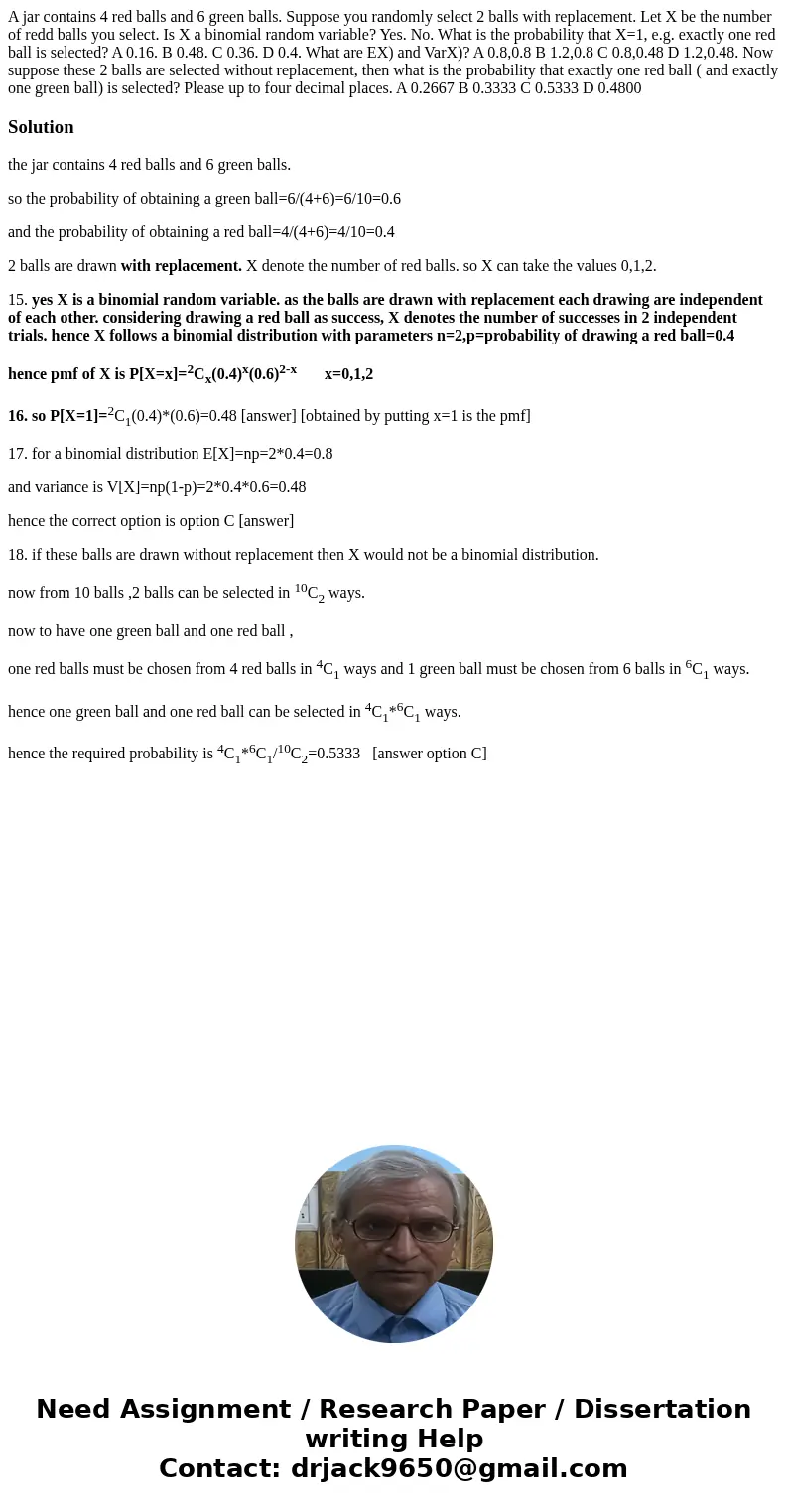A jar contains 4 red balls and 6 green balls Suppose you ran
Solution
the jar contains 4 red balls and 6 green balls.
so the probability of obtaining a green ball=6/(4+6)=6/10=0.6
and the probability of obtaining a red ball=4/(4+6)=4/10=0.4
2 balls are drawn with replacement. X denote the number of red balls. so X can take the values 0,1,2.
15. yes X is a binomial random variable. as the balls are drawn with replacement each drawing are independent of each other. considering drawing a red ball as success, X denotes the number of successes in 2 independent trials. hence X follows a binomial distribution with parameters n=2,p=probability of drawing a red ball=0.4
hence pmf of X is P[X=x]=2Cx(0.4)x(0.6)2-x x=0,1,2
16. so P[X=1]=2C1(0.4)*(0.6)=0.48 [answer] [obtained by putting x=1 is the pmf]
17. for a binomial distribution E[X]=np=2*0.4=0.8
and variance is V[X]=np(1-p)=2*0.4*0.6=0.48
hence the correct option is option C [answer]
18. if these balls are drawn without replacement then X would not be a binomial distribution.
now from 10 balls ,2 balls can be selected in 10C2 ways.
now to have one green ball and one red ball ,
one red balls must be chosen from 4 red balls in 4C1 ways and 1 green ball must be chosen from 6 balls in 6C1 ways.
hence one green ball and one red ball can be selected in 4C1*6C1 ways.
hence the required probability is 4C1*6C1/10C2=0.5333 [answer option C]

 Homework Sourse
Homework Sourse